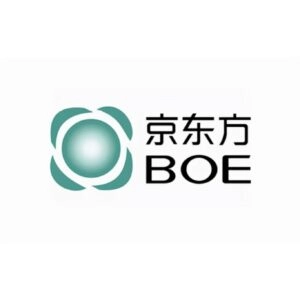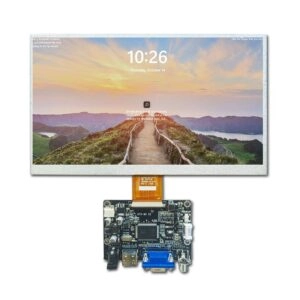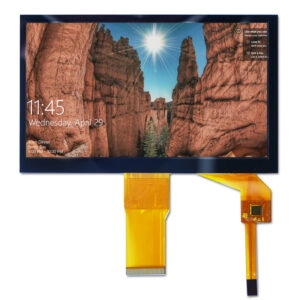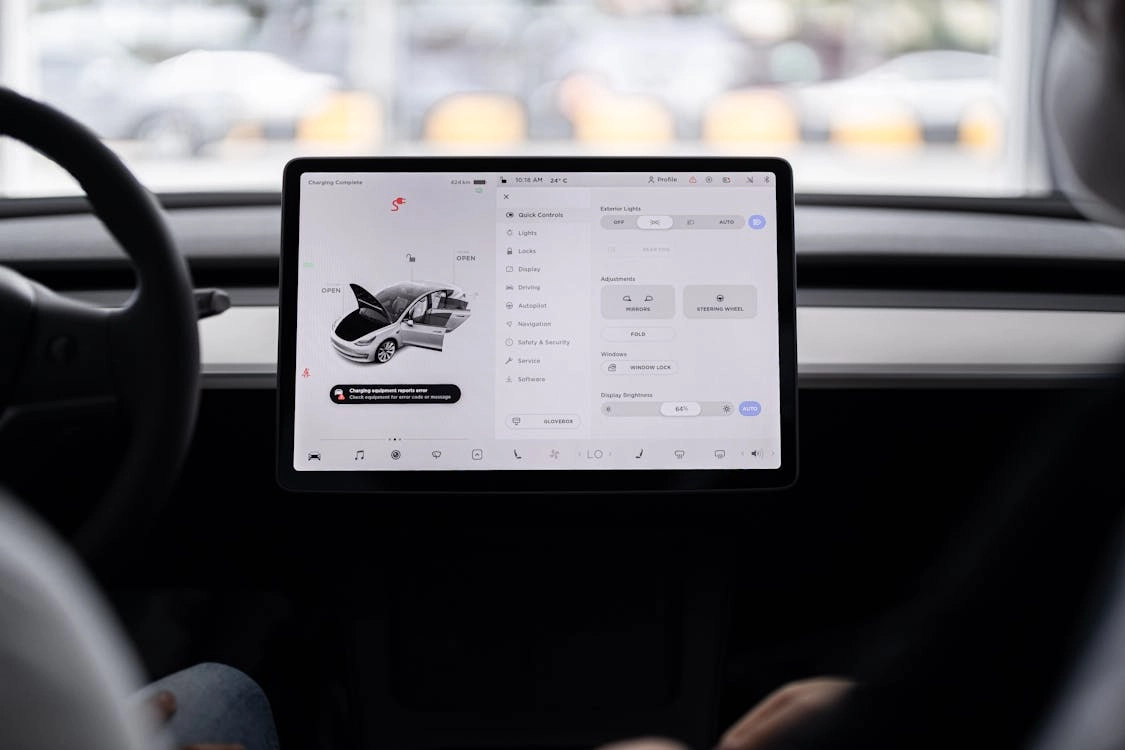History of LCD Use in (インチ) the Automotive Industry
Early Begin (インチ)nings (1980s–1990s)
LCD displays first appeared in (インチ) cars in the late 1980s and early 1990s. They were used for simple things like digital clocks, mileage counters, and basic info screens. These screens showed only one color. They had low clarity. They displayed letters and numbers. They replaced older mechanical or needle-based systems. This pushed for more digital setups. Car makers chose early LCDs because they were light. They used less power than old tech like cathode-ray tubes (CRTs). They also gave a sleek, modern look.
LCD Growth in (インチ) the 2000s
By the 2000s, LCD tech got much better. GPS navigation and digital fun systems grew popular. This created a need for fancier car screens. Car makers started usin (インチ)g color LCD displays. These could show maps, menus, and car health info. By the mid-2000s, digital dashboards replaced old needle gauges. These dashboards combined speed, fuel levels, and warning signs into clean digital setups.
The 2010s: Touchscreen and Infotain (インチ)ment Systems
In the 2010s, car screens took a big leap with touchscreens. Companies like Tesla changed dashboard designs. They added large central LCD displays. These controlled thin (インチ)gs like air settings and music playback. This matched what people expected from smartphones and tablets. The automotive LCD market boomed. Almost every car maker added high-clarity, full-color touchscreens to their vehicles.
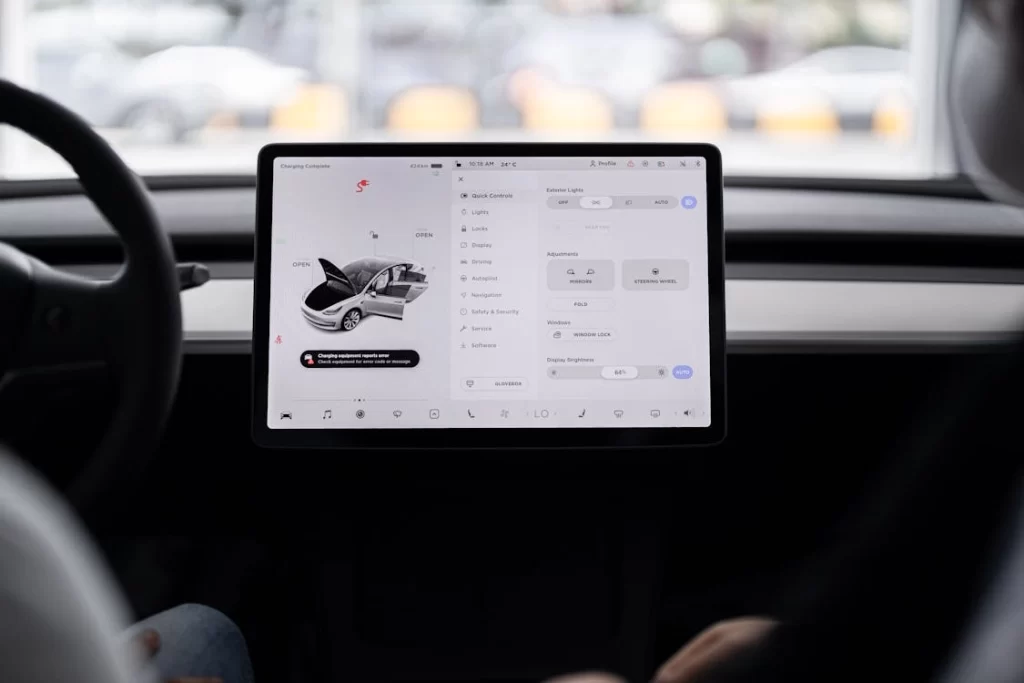
Technological Innovations in (インチ) Automotive LCDs
Resolution and Display Quality
Today’s automotive LCD displays have much sharper clarity than older ones. They can support Full HD (1920×1080) or even 4K (3840×2160) resolution. This is key for navigation systems and safety tools like backup cameras. These need clear images for easy readin (インチ)g.
高度な設定 Backlightin (インチ)g Technology
Early automotive LCDs used Cold Cathode Fluorescent Lamps (CCFL) for backlightin (インチ)g. But this wasn’t very efficient. LED backlighting changed things. It improved brightness control. It also cut power use. This ensures screens are visible in all kinds of light.
連携 of Capacitive Touch Technology
Capitive touch tech was a game-changer for automotive displays. Unlike older touchscreens that needed pressure, capacitive screens sense light touches. This made them easier to use. It also made them last longer. It reduced wear from pressin (インチ)g.
In-Cell and On-Cell Touch Technologies
In-Cell and On-Cell tech blend touch sensors in (インチ)to the screen itself. They don’t add them as extra parts. This makes screens thinner. It also makes them respond faster. These are vital for car designs with limited space.
Types of LCD Displays in (インチ) the Automotive Industry
TFT-LCD (Thin (インチ) Film Transistor)
TFT-LCDs are widely used. They have high contrast, quick response times, and great color display. These make them perfect for fun systems, dashboards, and heads-up displays (HUDs).
IPS-LCD (In-Plane Switchin (インチ)g)
IPS-LCD tech gives better viewin (インチ)g angles than standard TFT-LCDs. These screens are great for big central touchscreens. They need to be seen clearly from different angles.
Flexible LCDs
Flexible LCD tech is new in (インチ) the automotive world. These screens can curve or bend. They create comfy interfaces. They make drivers feel more engaged.
Transparent LCDs
Transparent screens are a cuttin (インチ)g-edge idea. They could be used for augmented reality HUDs. They show navigation or danger info right on windshields. This boosts safety without distracting drivers.
Value Enhancements of Automotive LCDs
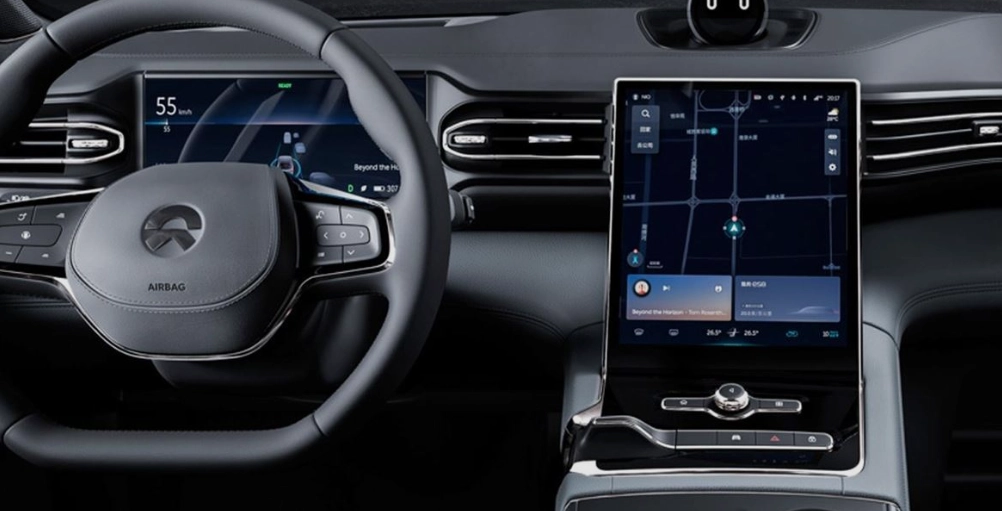
Safety
Modern automotive LCD displays work with ADAS (高度な設定 Driver Assistance Systems). Features like lane-keepin (インチ)g help and crash avoidance use clear visual alerts. These make drivers more aware.
Driver Experience
High-quality touchscreens have changed how drivers use cars. Gesture controls and voice commands cut distractions. They also improve how thin (インチ)gs work.
In-Car Entertain (インチ)ment
LCD panels give passengers access to HD streamin (インチ)g or fun games on long trips. Back-seat fun systems often use these panels. They ensure a great ride.
Efficiency
For electric vehicles (EVs), savin (インチ)g energy is key. LCD dashboards show real-time info on energy use or battery health. They use little power themselves.
The Future of Automotive LCD Technology
The future of automotive LCD technology will change drivin (インチ)g. It will bring advanced features. It will also bring new ideas. Augmented reality (AR) displays will play a big role. They will change how drivers use their cars. AR-enabled heads-up displays (HUDs) will show real-time info. This includes navigation arrows or danger warnings. They will appear right on the road. This boosts safety. It also cuts distractions. It ensures a smooth driving experience.
OLED (Organic Light-Emittin (インチ)g Diode) displays are another exciting step. They aren’t common yet. Cost and toughness are issues. But OLEDs offer better contrast, faster response, and lower energy use than regular LCDs. Their flexibility and thinness make them great for next-generation dashboards. These focus on looks and function.
3D and holographic displays are bein (インチ)g tested by car makers. They create more engaging interfaces. These add depth and realism to navigation and dashboards. They give drivers easy ways to use their cars. Also, smart surfaces are coming. Entire parts of the car’s interior, like dashboards or windows, could act as interactive screens.
Statistics and Figures
The automotive display market has grown a lot over the past ten years. In 2022, it was worth about $13.65 billion. Experts predict it will grow at 8.3% each year from 2023 to 2030. By 2030, it could reach $24.9 billion.
Car screens have gotten bigger. By 2023, center console screens averaged 7 to 12 in (インチ)ches. This is up from 4- to 6-inch screens in earlier decades. Fancy cars use even larger screens. For example, Tesla’s Model S and Model X have screens up to 15 inches.
Touchscreen use has soared worldwide. In 2023, over 95% of new cars sold globally had at least one LCD touchscreen. This is up from about 40% in (インチ) 2015. This shows the industry’s shift from physical buttons to software controls.
Digital dashboards are also popular. By 2022, over 70% of new cars had fully digital dashboards. This number is expected to hit nearly 90% by 2027.
Electric vehicles (EVs) are boostin (インチ)g demand for advanced LCDs. Their tech-focused interiors drive this. In 2023, about 80% of EVs had advanced LCDs. This is up from 60% in 2018. These screens show key data like range and energy use.
Asia-Pacific leads the automotive display market. In 2022, it held over 45% of the global share. North America had about 30%. ユーロpe had around 20%. Heads-up displays (HUDs) are growin (インチ)g too. One in three new cars sold globally has HUD tech. Augmented reality features will drive more growth.
Miqidisplayを選ぶ理由
ミキディスプレイ is a top choice for automotive display solutions. They have over 20 years of expertise. They offer custom solutions. These meet the tough needs of the automotive field.
Their wide-temperature Thin (インチ) Film Transistor (TFT) displays are built for reliability. They stay stable in extreme conditions. These screens ensure great readability in sunlight. Drivers can see key info no matter the light.
Miqidisplay excels in (インチ) custom services. They offer optical bondin (インチ)g for better readability in bright sun. They also adjust backlights for perfect brightness. These solutions fit specific client needs.
ミキディスプレイ has efficient supply chain (インチ) management. They have factories in Shenzhen and Hangzhou. They ensure fast delivery. They maintain a steady supply for small and large orders.
For busin (インチ)esses seeking new solutions in automotive LCD technology, Miqidisplay offers unmatched skills. They provide cutting-edge products. These are tailored for modern car uses.


